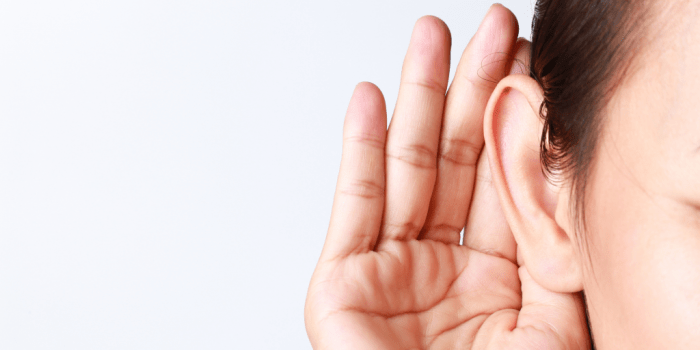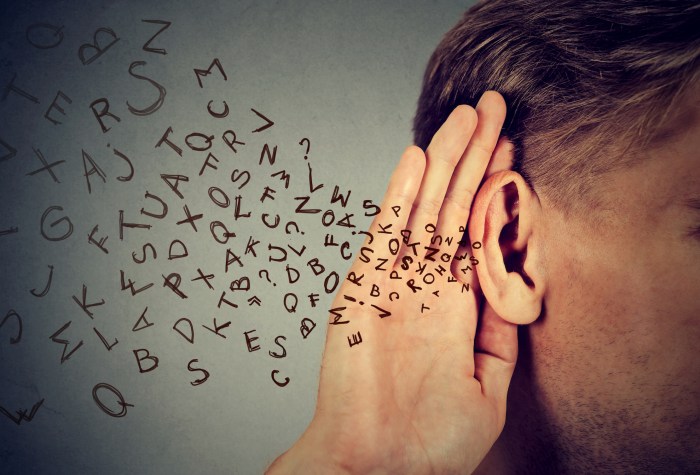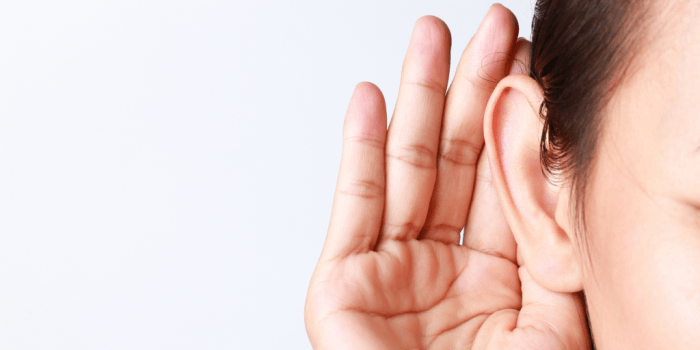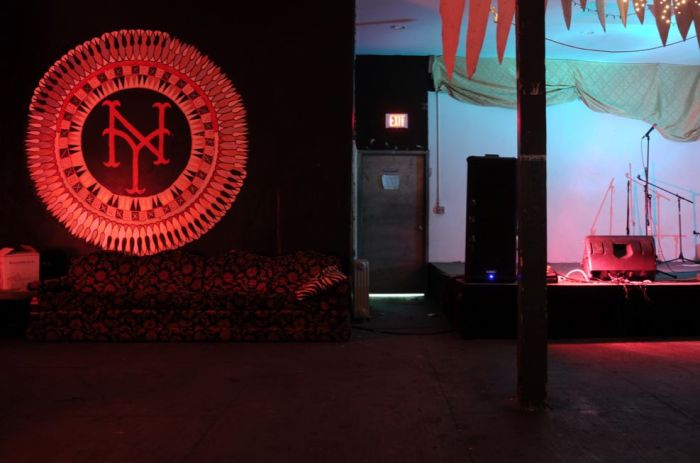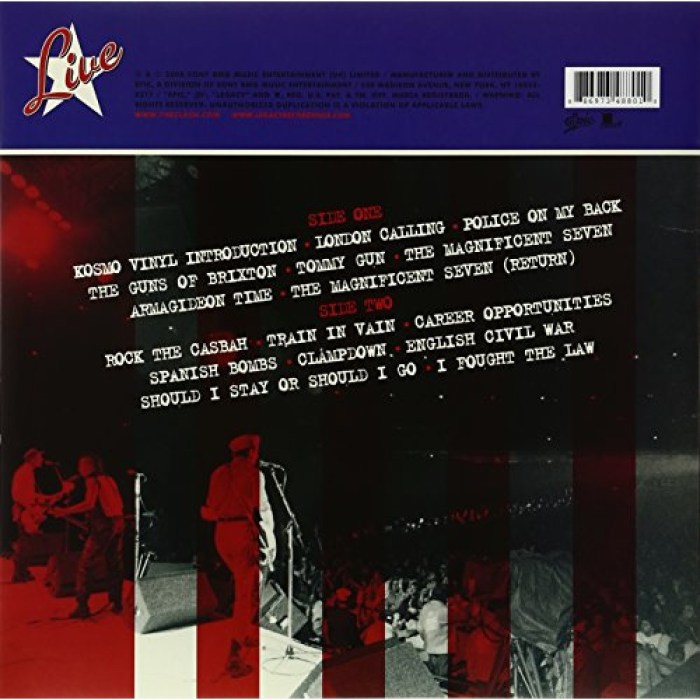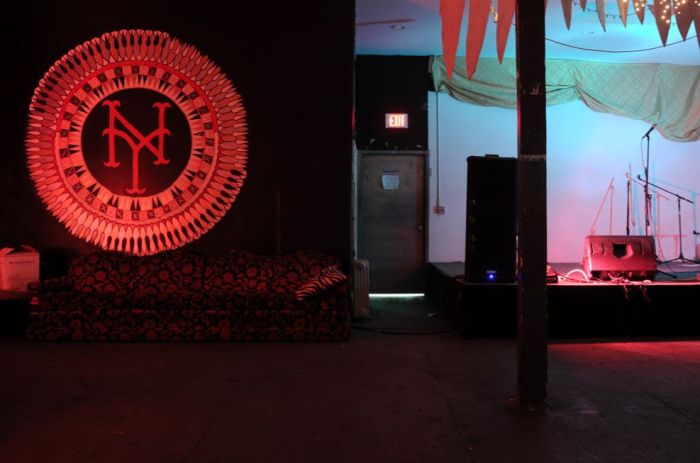New york criminalizes ticket bots scalpers can now get jail time – New York criminalizes ticket bots, scalpers can now get jail time. This groundbreaking legislation marks a significant shift in how the state tackles the issue of inflated ticket prices and the rampant use of bots to corner the market. The law aims to curb the predatory practices of ticket scalpers, and it’s creating a buzz in the industry, sparking debate about its impact on event access and the secondary ticket market.
The new law, a detailed response to the increasingly sophisticated and problematic use of bots and scalping in the New York market, has provisions specifically targeting these practices. It details penalties, legal precedents, and potential challenges to the law, aiming to address the economic impact on legitimate buyers. The legislation also forecasts potential impacts on ticket availability, prices, and the secondary market, offering a comprehensive overview of the issue and the proposed solutions.
Background of Ticket Bots and Scalping
Ticket bots and scalping have a long and evolving history, deeply intertwined with the desire to profit from high-demand events. Early forms of scalping predate the internet, with individuals buying tickets in bulk and reselling them at inflated prices. The rise of the internet, however, dramatically accelerated these practices, creating a new era of sophisticated and often automated methods.The growth of online ticket marketplaces, coupled with the proliferation of sophisticated software, has fueled the development of ticket bots.
These bots are programmed to automatically purchase tickets at face value, often in large quantities, and then resell them at significantly higher prices on secondary markets, a process that can deprive legitimate ticket buyers of access.
Historical Overview of Ticket Bots and Scalping
Ticket scalping, in its basic form, has existed for decades, often operating in the shadows of major events. Early scalpers relied on physical methods, such as pre-event queues or purchasing tickets in bulk. The advent of the internet transformed the landscape. Online marketplaces and auction sites provided new avenues for scalpers to reach buyers. The development of automated ticket bots further intensified the issue.
These bots are designed to outpace human buyers, securing tickets before they are available to the general public. They function as automated agents, able to access and purchase tickets in a manner that is much more efficient than a human could manage.
Growth and Evolution of Practices in the New York Market
New York, a hub for major sporting events and concerts, has seen a substantial increase in ticket bot activity. The high demand for tickets to events held in the city’s iconic venues has created a fertile ground for scalpers and bots to thrive. This surge in activity is particularly notable in recent years, coinciding with the increase in online ticket marketplaces and the sophistication of ticket-buying software.
These bots can process large numbers of transactions, ensuring they purchase tickets faster than individual buyers, thereby disrupting the fair and equitable distribution of tickets.
Economic Impact on Legitimate Ticket Buyers
The proliferation of ticket bots and scalping has a demonstrably negative impact on legitimate ticket buyers. These practices drive up ticket prices significantly, making it prohibitively expensive for many to attend events they would otherwise be able to afford. The inflated prices disproportionately affect individuals and families, often limiting their ability to enjoy live entertainment. For example, a concert ticket that might cost $50 through legitimate channels could be resold for $200 or more on a secondary market.
Current Regulatory Landscape Surrounding Ticket Sales in New York
New York’s current regulatory landscape surrounding ticket sales is evolving to address the increasing problem of ticket bots and scalping. Laws are being implemented that aim to curb these practices. These regulations often focus on preventing fraudulent or deceptive practices.
Comparison to Similar Laws in Other Jurisdictions
Various jurisdictions have adopted different approaches to regulating ticket sales. Some jurisdictions have more stringent laws than New York, while others have yet to implement significant measures. Comparing these laws reveals a diverse range of responses to the issue. For example, some states have enacted laws specifically targeting ticket bots, while others focus on regulating secondary ticket markets.
The approach of each jurisdiction reflects a unique balance between protecting consumers and fostering a market for ticket resale.
Legal Implications of Criminalization
The recent criminalization of ticket bots and scalpers marks a significant shift in how the legal system addresses the burgeoning problem of inflated ticket prices. This new approach aims to protect consumers and ensure fair access to events. The legislation directly targets the practices that often lead to exorbitant ticket prices, fostering a more equitable marketplace.The specifics of the new law are crucial in determining its effectiveness and potential impact.
Understanding the provisions, penalties, and legal precedents is vital to navigating the complexities of this new landscape. Furthermore, the potential legal challenges and prosecution procedures will shape the future of ticket sales.
Specific Provisions of the New Law
The new law explicitly defines ticket bots as software or automated systems used to purchase tickets in bulk or at an accelerated pace. It also includes provisions that cover individuals who use such bots, as well as those who facilitate their use. Furthermore, the law explicitly prohibits the use of bots to circumvent ticket limits or other restrictions set by event organizers.
Penalties for Individuals Involved in Ticket Bot Operations
Penalties for individuals involved in ticket bot operations vary depending on the severity of the offense and the amount of profit gained. The law likely categorizes offenses into different tiers, ranging from fines for minor violations to imprisonment for more significant offenses. These penalties will likely be graduated to account for factors such as the scale of the operation and the number of victims affected.
Legal Precedents Supporting Criminalization
Legal precedents supporting the criminalization of ticket bots often involve cases of fraud, unfair competition, or violations of consumer protection laws. Cases where similar automated systems have been used to manipulate markets provide precedent for criminalizing the activity. For example, cases of algorithmic trading that resulted in market manipulation offer a comparable framework for prosecuting ticket bot operators.
Potential Legal Challenges to the New Law, New york criminalizes ticket bots scalpers can now get jail time
Potential legal challenges to the new law might arise from arguments about freedom of speech or the right to use technology. Defendants might argue that the law infringes on their right to program and operate software. Furthermore, there could be challenges related to the definition of “scalping” and the enforcement of the law in specific situations. A possible challenge could stem from the complexity of proving intent and establishing a direct link between the bot’s actions and inflated ticket prices.
Process of Prosecuting Scalpers Under the New Law
The process of prosecuting scalpers under the new law will likely involve several stages. The investigation will involve examining transaction records, identifying the parties involved, and collecting evidence to demonstrate that the ticket bots were used to manipulate the market or exploit consumers. This will likely involve analyzing data logs, tracing transactions, and potentially interviewing witnesses. Ultimately, a court will determine guilt or innocence based on the evidence presented.
The specific procedures will be Artikeld in detail within the legislation’s legal framework.
New York’s crackdown on ticket bots is serious, with scalpers now facing jail time. It’s a tough stance, but maybe a necessary one. This new law reflects the frustration many feel about inflated ticket prices. It’s a shame when something as simple as celebrating a loved one’s birthday, like in the beautiful song “Happy Birthday Beautiful Soul” Happy Birthday Beautiful Soul , can be so financially strained.
Hopefully, this change will make attending events more accessible to everyone, not just the wealthiest. The fight against ticket bots is far from over, but New York’s move is a step in the right direction.
Impact on Ticket Availability and Prices
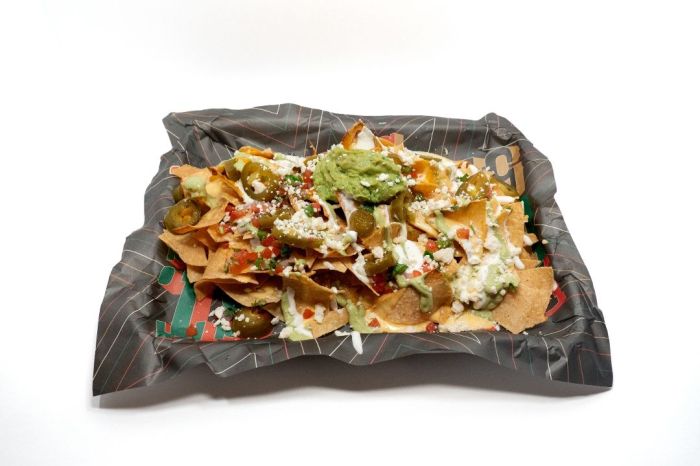
New York’s crackdown on ticket bots and scalpers has the potential to reshape the entire landscape of event ticketing. The criminalization of these practices raises significant questions about how this will affect ticket availability, prices, and the secondary market. The long-term consequences are still unfolding, but initial predictions suggest a complicated interplay of factors.
Ticket Availability for Events
The criminalization of ticket bots directly impacts the supply chain of tickets. Ticket bots, by design, purchase large quantities of tickets to resell at a markup, often leaving legitimate fans without access. With the criminalization of these practices, a key mechanism for manipulating ticket availability will be diminished. This could lead to a more even distribution of tickets, potentially making them more accessible to fans attending events in person.
However, the impact on smaller or less popular events might be less significant, as demand is lower in those instances.
Ticket Prices After the New Law
Predicting ticket prices after the new law is difficult. Several factors will influence the price trajectory. Without ticket bots artificially inflating demand, the price might be more aligned with the true market value. On the other hand, if the demand remains high and the supply is limited, prices might still increase. The elimination of scalpers will likely reduce the supply of tickets on the secondary market, potentially leading to a rise in prices.
Potential Changes in the Secondary Ticket Market
The secondary ticket market, characterized by high prices, will undergo significant changes. The criminalization of ticket bots and scalpers could lead to a decrease in the overall volume of tickets available on these platforms. This reduction in supply, coupled with reduced demand from ticket bots, could lead to lower prices on legitimate secondary markets, particularly for events with lower demand.
However, if the demand for tickets remains strong and the supply remains limited, prices could still remain elevated. The availability of legitimate secondary markets that comply with the new regulations will also be key in determining the future of the secondary market.
Impact on the Ticket Supply Chain
The new law significantly impacts the ticket supply chain. Traditional ticket vendors, often dealing with large quantities of tickets, will need to find new strategies for allocating tickets to fans. There may be a greater emphasis on first-come, first-served systems and verified ticket sales to prevent bots from accessing tickets. A decrease in ticket bots may reduce the pressure on ticket vendors to oversell tickets to accommodate bot purchases.
Comparison of Ticket Pricing Before and After the New Law
| Feature | Before New Law | After New Law |
|---|---|---|
| Ticket Availability | Often scarce for popular events, with bots often buying up large quantities | Potentially more evenly distributed, but may vary depending on event popularity and demand |
| Ticket Prices | Often significantly inflated due to bot activity and scalping | Potentially more aligned with true market value, but could remain elevated if demand exceeds supply |
| Secondary Market | Highly active with inflated prices and high volume | Potentially less active, with lower prices for some events and potentially higher for others |
| Supply Chain | Pressure on vendors to oversell to accommodate bots | Potential for a more balanced approach focusing on verified ticket sales and first-come, first-served systems |
Public Perception and Debate

The new law criminalizing ticket bots and scalpers has sparked considerable public debate, with reactions ranging from enthusiastic support to fierce opposition. The law’s potential impact on ticket availability and prices, as well as the ethical implications of scalping, are central to the discussion. The very act of criminalizing a market activity, even one perceived as exploitative, raises important questions about the balance between individual freedoms and public interest.The law’s effectiveness in achieving its intended goals, such as curbing inflated ticket prices, is a key area of contention.
Public perception plays a significant role in shaping opinions and influencing support for or against the legislation.
Public Reactions to the New Law
Public reaction to the new law has been diverse. Supporters often highlight the unfairness of inflated ticket prices, emphasizing the frustration of fans unable to afford legitimate access to events. Conversely, opponents emphasize the potential for unintended consequences and the impact on the free market. The law’s impact on smaller ticket vendors and resellers, often perceived as legitimate businesses, is also a point of concern.
Perspectives on Fairness and Effectiveness
Various perspectives exist regarding the fairness and effectiveness of the law. Proponents argue that the law is a necessary measure to address the exploitative practices of ticket bots and scalpers. They point to the exorbitant prices charged for tickets, often exceeding the original cost by several multiples. This creates a barrier to entry for many fans, essentially denying access to events.
Conversely, opponents argue that the law unfairly targets a specific market segment, potentially harming legitimate businesses and restricting the ability of fans to resell tickets. The law may also stifle competition, limiting the options available to fans seeking to purchase tickets.
Arguments for Criminalizing Ticket Bots
The arguments in favor of criminalizing ticket bots frequently center on the idea of protecting consumers from unfair pricing practices. These practices can create a barrier to entry for fans seeking to attend events, creating a sense of inequity and discouraging participation in events. The arguments often highlight how bots manipulate markets, causing significant price increases that disadvantage consumers.
- Ticket bots exploit the demand for tickets by using automated systems to buy up large quantities, effectively driving up prices beyond the reasonable market value.
- The automated nature of these bots eliminates the need for human interaction, leading to a lack of accountability and transparency.
- The significant profit margins generated by ticket bots often result in excessive enrichment at the expense of consumers, who are left with limited access to events and higher prices.
Arguments Against Criminalizing Ticket Bots
Opponents of the law frequently highlight concerns about the potential for stifling competition and creating unintended consequences. These concerns often include the impact on legitimate resellers and the possible reduction in ticket availability. The law may also limit the options available to fans seeking to purchase tickets, especially for events with high demand.
- Criminalizing ticket bots could stifle the free market, potentially reducing ticket availability and driving up prices further.
- The law could harm small ticket resellers and vendors who rely on the market for secondary ticket sales.
- Some argue that individuals should have the right to sell tickets at a price they deem appropriate, particularly if the price reflects the market demand.
Comparing Scalpers’ Roles
Different viewpoints exist on the role of scalpers in the market. Some consider them to be necessary intermediaries who allow fans to sell tickets when they can no longer attend, while others view them as profiteers who exploit demand.
New York’s crackdown on ticket bots is serious, with scalpers now facing potential jail time. It’s a fascinating contrast to the technical challenges of maintaining older systems, like running a Chkdsk Function on Windows XP. Run a Chkdsk Function on Windows XP can be tricky, but thankfully, New York’s new laws are aimed at curbing the abuse of ticket markets, making it harder for bots to exploit the system and hopefully leading to more fair access for everyone.
This should finally help to keep tickets out of the hands of the scalpers and put a stop to ticket bots.
| Viewpoint | Description |
|---|---|
| Pro-Scalper | Scalpers provide a valuable service by connecting buyers and sellers, facilitating the resale of tickets. They play a vital role in the market, allowing fans to obtain tickets when other avenues are unavailable. |
| Anti-Scalper | Scalpers often exploit high demand by charging exorbitant prices, effectively creating a barrier to entry for many fans. They prioritize profit over the experience of the event, making it unaffordable for many individuals. |
Potential for Future Developments
The recent criminalization of ticket bots and scalpers in New York City marks a significant step toward regulating the secondary ticket market. However, the law’s effectiveness hinges on its adaptability and potential for future adjustments. This section explores potential amendments, alternative solutions, and strategies for mitigating the negative impact of scalping while ensuring the continued accessibility of tickets for fans.The initial legislation provides a framework, but unforeseen challenges and evolving market dynamics require ongoing evaluation and potential modifications.
New York’s crackdown on ticket bots is a big deal, meaning scalpers could now face jail time. It’s a fascinating look at how the digital age is changing how we approach these issues. This new legislation is similar to the challenges of controlling access to coveted experiences, like tickets to incredible movies, such as miles morales into the spiderverse , where demand often outstrips supply.
Hopefully, this will level the playing field and prevent the kind of overwhelming scalping that makes events inaccessible for fans. Ultimately, these laws are an attempt to make sure everyone has a fair shot at enjoying things.
The need for continuous adaptation to address emerging technologies and strategies employed by scalpers is crucial.
Potential Adjustments and Amendments to the Law
The current law may need adjustments to effectively target new technologies and techniques used by scalpers. For instance, the law might need to be amended to include provisions for online platforms that facilitate ticket resales. The definition of “scalping” could be broadened to cover more sophisticated methods, such as the use of artificial intelligence (AI) or bots for ticket acquisition.
This will ensure the law remains relevant in the face of evolving technology. Clarification on the role of ticket brokers and legitimate resale platforms in relation to the new legislation will be crucial. Clear guidelines for legitimate ticket resale businesses would help avoid unintended consequences.
Alternative Solutions to Address Ticket Bots and Scalping
Exploring alternative solutions is essential to address the underlying causes of inflated ticket prices. A possible approach involves introducing a system of price controls or caps on secondary ticket markets. This approach could potentially limit the excessive markups often seen in scalped tickets. An alternative strategy could be to collaborate with ticket sellers and venues to establish a fair pricing structure.
Incentivizing legitimate ticket sellers through tax breaks or preferential treatment might encourage the development of a more regulated and transparent secondary market. Additionally, a transparent and regulated system for ticket resale, potentially managed by a government agency, might help ensure a more equitable distribution of tickets and lower prices.
Strategies for Mitigating the Negative Impact of Scalping
Strategies aimed at mitigating the negative impacts of scalping should focus on increasing ticket availability. Incentivizing venues to release more tickets for general sale, and potentially exploring measures to ensure a more equitable distribution of tickets, would help limit the scalpers’ ability to profit from limited availability. Additionally, implementing a system of verifiable ticket ownership could discourage fraudulent or illegitimate resale activities.
Education campaigns and public awareness initiatives could help consumers make informed decisions and avoid scams.
Potential Improvements to the New Law to Make It More Effective
To ensure the law’s effectiveness, several improvements are possible. A robust system of monitoring and enforcement, coupled with clear guidelines for the identification of scalpers, is crucial. Introducing penalties for repeat offenders, or escalating penalties based on the scale of the violation, could deter future scalping activities. Incorporating provisions for cooperation with other jurisdictions, particularly in cases of cross-border scalping, could expand the reach and effectiveness of the law.
Collaboration with technology companies to identify and block malicious bots used for scalping could enhance the law’s effectiveness.
Timeline for Expected Effects of the New Law
The initial effects of the new law are expected to be seen within a few months. Increased scrutiny of ticket resale activities, and potential price adjustments in the secondary market, will likely be noticeable in the short term. Longer-term impacts, such as a more equitable distribution of tickets and decreased inflated prices, are expected to emerge over a longer period, perhaps several years, as the market adjusts to the new regulations and enforcement efforts.
The actual timeframe will depend on the intensity of enforcement and the scalpers’ response.
Illustrative Case Studies: New York Criminalizes Ticket Bots Scalpers Can Now Get Jail Time
New York’s criminalization of ticket bot scalpers presents a fascinating case study, not just for the legal implications but also for the practical challenges and opportunities it presents. Understanding how other jurisdictions have handled similar issues, and how this new law might be applied in specific scenarios, provides valuable insight into its potential impact on the future of ticketing.
Examining successful prosecutions and hypothetical scenarios allows us to anticipate potential outcomes and shape future discussions.
Successful Prosecutions in Other Jurisdictions
While specific details about successful prosecutions of ticket bot operators are often kept private, publicly available information reveals that some jurisdictions have successfully prosecuted individuals or companies engaged in similar activities. These cases often rely on evidence of organized ticket-buying schemes, fraudulent practices, and the exploitation of vulnerable ticket buyers. The outcomes vary, from fines to imprisonment, depending on the severity of the violations and the jurisdiction’s specific laws.
Examining successful prosecutions in other states and countries can provide valuable insights into the practical application of such laws.
Hypothetical Scenarios Illustrating Application
To better understand the practical application of the new law, consider these hypothetical scenarios:
- A ticket bot operator is found to have used fraudulent means to obtain a large number of tickets for a highly sought-after concert. Evidence shows they manipulated the ticket purchasing system to bypass legitimate buyers, creating a significant market distortion. The operator could face significant penalties, potentially including imprisonment, for fraud and market manipulation.
- A ticket reseller uses a bot to purchase tickets in bulk and resells them at significantly inflated prices. This case demonstrates the law’s impact on aggressive ticket profiteering. Evidence of the bot’s use and the inflated prices charged would be crucial to a successful prosecution.
- A company that specializes in developing and deploying ticket bots is found to be knowingly facilitating the activity of numerous ticket resellers. The company could be held accountable for the actions of its customers, highlighting the law’s potential to address broader issues of illegal ticket brokering.
Impact on Specific Events
The new law’s impact on specific events is likely to vary based on the event’s popularity and the scale of ticket bot activity. For instance, a highly anticipated sporting event or concert with a high demand for tickets is more susceptible to significant price gouging. In such cases, the law may reduce the power of ticket bots, leading to fairer prices for legitimate buyers.
On the other hand, for events with lower demand, the effect might be less pronounced.
Detailed Case Study: A Hypothetical Example
A group of individuals formed a company specializing in developing and deploying ticket bots. Their software was designed to rapidly purchase tickets from various vendors, exploiting weaknesses in the ticketing systems. They were able to amass significant quantities of tickets for high-demand events. They then resold these tickets on various online marketplaces at substantially inflated prices. The investigation was successful due to the discovery of numerous transaction records, bot activity logs, and testimony from disgruntled ticket buyers.
The individuals were charged with several counts of fraud and market manipulation, and after a lengthy trial, the court found them guilty, leading to substantial fines and imprisonment. This case highlights the importance of robust data collection and investigative techniques in prosecuting ticket bot operators.
Impact on the Future of Ticketing
The criminalization of ticket bots has the potential to transform the ticketing landscape, fostering a more equitable and transparent market. The law might discourage the development and use of ticket bots, leading to more realistic pricing models for tickets. It also incentivizes ticketing platforms to improve their security measures to prevent bot exploitation. In the long term, this could lead to a ticketing system that better serves legitimate ticket buyers and reduces the prevalence of scalping.
Final Wrap-Up
In conclusion, New York’s new law represents a significant step toward addressing the problematic issue of ticket bots and scalping. While the law has the potential to significantly impact the secondary market, the future will determine whether it effectively regulates ticket prices and ensures fairer access to events. Public perception, legal challenges, and alternative solutions will all play a role in shaping the long-term effects of this legislation.
The law’s implementation and impact on ticket availability and prices will be closely watched, providing insights into the future of ticketing in New York and beyond.

